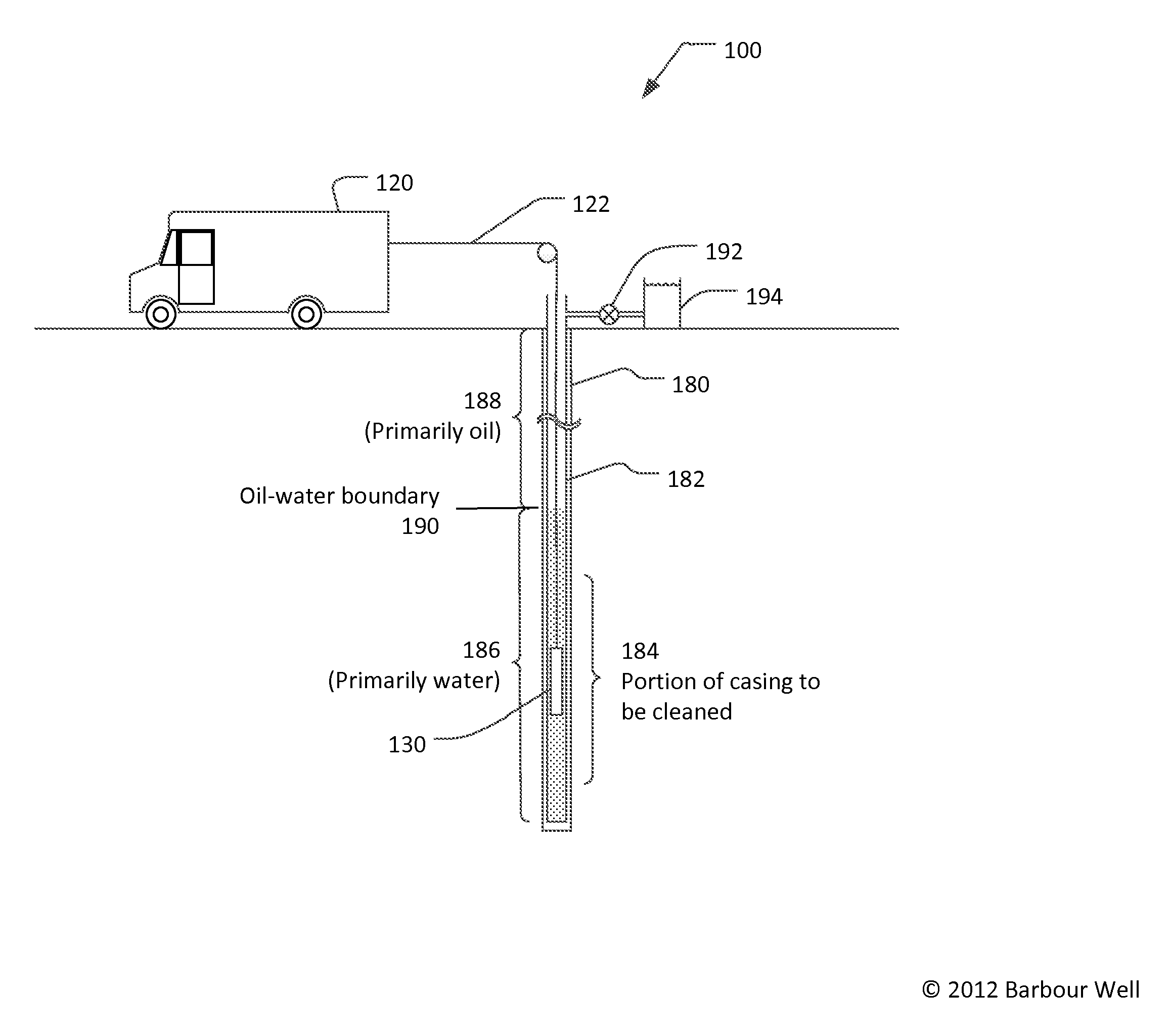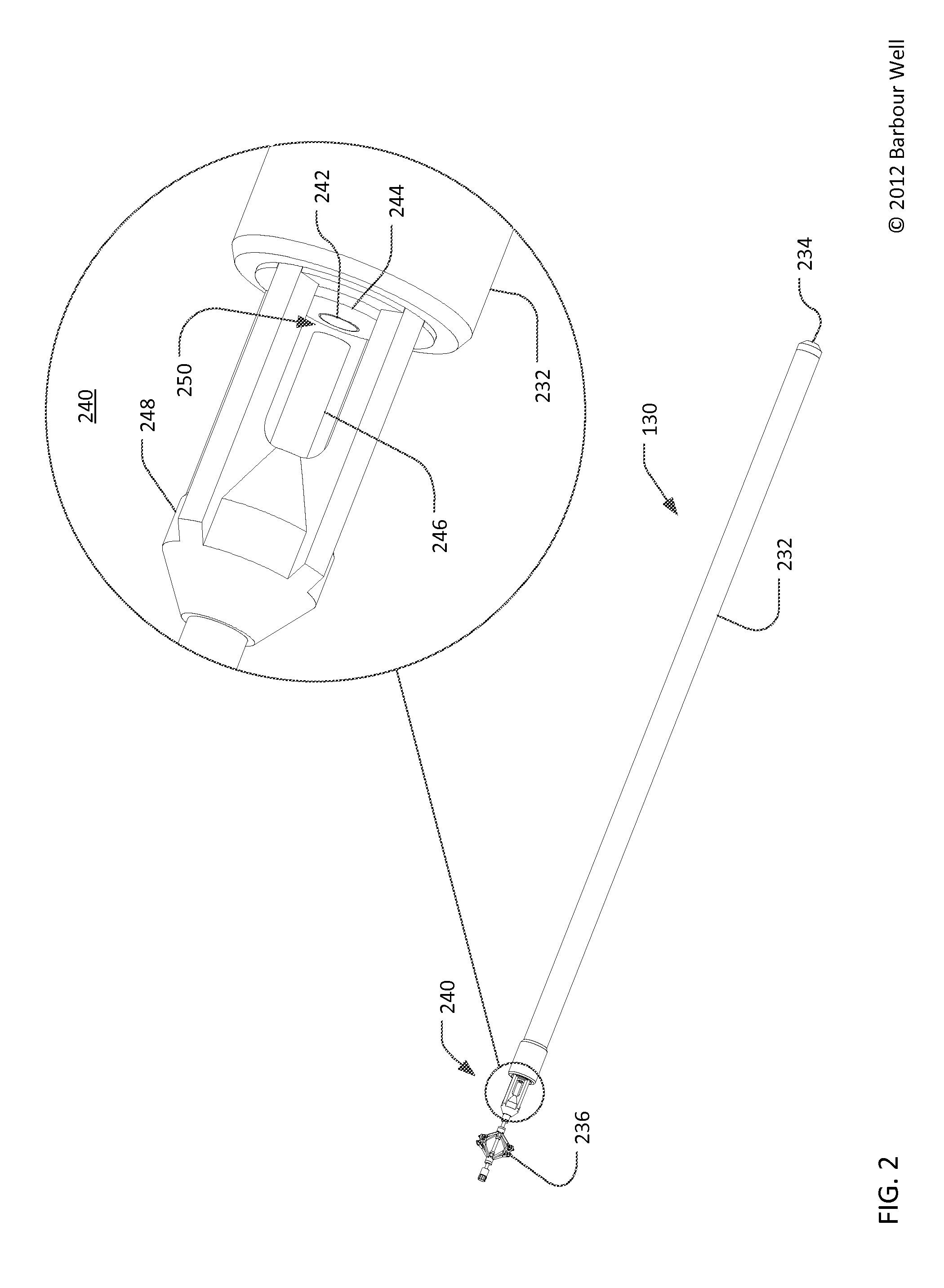Well Cleaning Method
a well and well casing technology, applied in the direction of well/well accessories, fluid removal, earthwork drilling and mining, etc., can solve the problems of reducing the flow of fluids, /or risking erosion or other damage to the well casing, and the effect of limited well cleaning techniques
- Summary
- Abstract
- Description
- Claims
- Application Information
AI Technical Summary
Benefits of technology
Problems solved by technology
Method used
Image
Examples
Embodiment Construction
Description of Apparatus
[0018]Referring now to FIG. 1, a well cleaning system 100 may include a surface installation 120 (illustrated in FIG. 1 as a truck), a cable 122, and a cleaning tool 130. The surface installation 120 may use the cable 122 to lower the cleaning tool 130 into a borehole 180 which is typically lined with a casing 182. All or portions of the annular space between the borehole 180 and the casing 182 may be filled with cement and / or gravel (not shown in FIG. 1). The cleaning tool 130 may be configured to create an electrical discharge between a pair of electrodes. The electrical discharge may, in turn, generate a shock wave in the fluid within the casing 182 to clean a portion of the casing proximate to the discharge location. The electrical discharge may also produce ozone and / or ultraviolet light which may provide an additive cleaning effect. The cleaning tool 130 may create electrical discharges at intervals as the tool is lowered into and / or withdrawn from the ...
PUM
 Login to View More
Login to View More Abstract
Description
Claims
Application Information
 Login to View More
Login to View More - R&D
- Intellectual Property
- Life Sciences
- Materials
- Tech Scout
- Unparalleled Data Quality
- Higher Quality Content
- 60% Fewer Hallucinations
Browse by: Latest US Patents, China's latest patents, Technical Efficacy Thesaurus, Application Domain, Technology Topic, Popular Technical Reports.
© 2025 PatSnap. All rights reserved.Legal|Privacy policy|Modern Slavery Act Transparency Statement|Sitemap|About US| Contact US: help@patsnap.com



